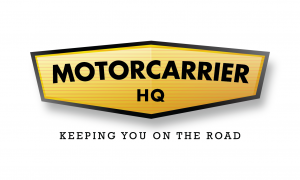November 1, 2022
When Should You Make the Leap to Owner Operator?

Looking ahead at the next 12–18 months, it’s easy to view an economy trending downward as a sign to avoid the potential risks associated with going independent. Volatile market conditions can make the decision to become an owner operator seem especially risky — but is there ever a “right time” to make the jump?
The truth is, successfully transitioning from a fleet driver (or someone outside the industry entirely) to independent trucking is often less about timing and more about a driver’s level of preparedness. It takes a fair amount of research, industry knowledge, and careful financial planning to branch out as an owner operator, but with the right resources, any time can be the right time to start your own business.
The Haulin’ Assets podcast and additional resources available through Motor Carrier HQ are built to help potential owner operators prepare for a smooth transition, regardless of the state of the economy or other influencing factors. Here’s how you can confidently make the leap to owner operator and unlock greater earning potential in the world of trucking.
Recognize Owners Operators Are Small Business Owners
Major economic trends will inevitably impact your small businesses. Periods of recession can certainly affect rates, operating costs, and the number of jobs available. Though these periods can be daunting, the Motor Carrier HQ team maintains confidence in a prepared driver’s ability to make the leap — even in chaotic conditions.
Becoming an owner operator and enjoying life on the road as an independent entity requires a shift in mindset from fleet driver to small business owner. As such, it invites the risks and challenges of any entrepreneurial endeavor. Without the security and convenience afforded by a fleet position, owner operators are left to handle tasks like finding loads, keeping accurate records, and securing equipment and insurance on their own.
Many of trucking’s behind-the-scenes operations might feel foreign at first, even to long-time fleet drivers. However, with proper research and preparation, you can learn how to stay on top of all the administrative tasks, business expenses, insurance plans, endorsements, licenses and the equipment maintenance necessary to stay safe while also being profitable within the bounds of federal regulations.
While outsourcing these responsibilities is also an option, doing so will further increase the financial requirements to get your business off the ground. This can be problematic when you start to grow your business more and hire other drivers who will add additional variables like employee benefits and compensation which further cut into company profits. If you aren’t certain about your business plan and expenses from the outset, these changes and extra costs have the potential to break your business.
Don’t Go in Without a Business Plan
Early in the process of moving to owner operatorship, drivers will want to determine the type of freight they plan on hauling. Doing so will help dictate which endorsements, equipment and other requirements are needed to legally operate (as in cases with HAZMAT or oversized freight). While taking aim at a single niche market can be tempting, specializing in just one area also limits the number of available jobs you can accept. The ability to haul several types of specialized freight makes for a more valuable shipping partner.
Another common route for new owner operators is to contract with larger trucking companies on a freelance basis. This strategy effectively delays the need for independent drivers to develop their own network of connections completely from scratch, but at the expense of some job flexibility and control. Still, this is a safe middle-ground for those just starting out or with strong relationship ties to their former companies.
Know What Your Startup Costs Are
If you haven’t yet been introduced to the Motor Carrier HQ startup cost calculator, know that it’s one of the most valuable resources available through our site. It can help you start to gauge exactly what you’ll need in order to finance the start of your owner operator career.
Many drivers are new to handling the business expenses associated with running a trucking business. It’s crucial to be extremely detail-oriented when considering startup costs so you can avoid any ugly surprises down the road by leaving out essential but expensive business costs. Taxes, insurance, maintenance costs and even the rig itself can add up to more than you might have anticipated — and that’s before considering more variable costs like fuel and pay rates.
We’ve written previously on calculating your business startup costs in full detail here to aid owner operators who are just getting started.
Know What’s In Your Control
Odd as it may sound, one of the reasons preparation is so critical from the start of your owner operator career is that no one can prepare for everything. Uncontrollable factors like natural disasters can alter supply chains overnight. Freight can be lost, damaged, or stolen. Drivers can even find themselves spending a week performing an engine rebuild in the middle of December.
Even positive changes within the industry can be sudden and unpredictable. New leaps in technology can emerge, raising the expectations of customers and the everyday expenses for those in the shipping business. Competitors can discover innovative new systems for delivering freight which are soon adopted industry-wide. When these big shifts strike, it’s often easier for major companies to allocate resources toward new investments than those who are working independently.
It’s an owner operator’s responsibility to remain informed and alert to any variable that might change the shipping landscape in the near future. Success frequently means weathering the storm of unpredictability, a task made much easier when the details within an owner operator’s control are kept in check.
One thing that can help owner operators is understanding your burn rate and saving accordingly. Burn rate is the amount of cash going out every month, regardless of revenue and loads delivered. These things often include insurance and paying down the loan for the truck and trailer. Having enough money saved up to cover 6–12 months of those expenses will save many owner operators the headaches that come from downward economic trends. These savings can be built up over time and should be a part of your business plan.
Any Time Is the Right Time — If Drivers Are Flexible
If there’s one lesson to be learned from Motor Carrier HQ founder Chris Vernon’s journey as he builds his trucking business from the ground up, it’s to make the most of the good months to get through the bad ones.
As discussed in this Haulin’ Assets economic update episode, Vernon has managed to expand his operation from a single driver with a truck to a multi-truck fleet over the past three years. Growing through the chaos of a global pandemic and fluctuating market conditions wasn’t easy, but adapting to challenges as they came was important to his success. It’s also a key component of any successful small business to be able to adapt with the changing marketplace.
Successful owner operators know how to maximize their profitable months and safeguard themselves against the inevitable downturns. The Motor Carrier HQ team specializes in coaching these important skills, developing resources to facilitate preparedness and aiding drivers new to the trucking industry.


